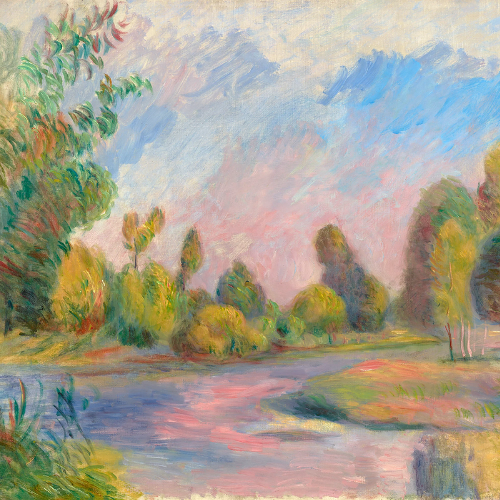Hundreds of thousands of tiny pieces of stone are painstakingly arranged in a seemingly random pattern. One by one, each minuscule segment is placed beside the other, guided by the steady hand of a gifted artisan with the expertise of generations worth of experience behind him. It could take months or even years to come to fruition. When complete, the masterpiece comes into focus, and the tremendous skill, precision and artistic vision required in the creation of mosaics become crystal clear.

This breathtaking, exhibition quality micromosaic is attributed to Domenico Moglia
The first evidence of mosaics can be traced back to 3rd millennium B.C.E. Mesopotamia where they were comprised of round pebbles, but it was the Greeks that pioneered and perfected the technique in the 4th Century, B.C.E. These works of unprecedented beauty and complexity were considered important decorative art forms among the ancient Greeks. Around the 1st Century B.C.E., mosaic artistry traveled to Italy where the Romans decorated their villas, including those in the rich Roman provinces of Africa and Syria, with massive mosaic floors detailing scenes of daily life. The most popular mosaic subjects, however, were mythological scenes. From the victories of the gods Dionysus and Apollo to depictions of the graceful Muses, they were executed with meticulous accuracy.
Looking Up
Perhaps the most recognizable mosaics were created by the early Christians with whom the art form blossomed. The first evidence of Christian usage happened sometime in the 4th Century C.E. when the bishop of Aquileia commissioned the floor of his church in northern Italy to be covered in an exceptional mosaic depicting Jonah and the whale. Before Christian usage, most mosaics were crafted onto floors, but with the building of grand basilicas by the end of the 4th Century, mosaics became more prominent as wall and ceiling artworks. The earliest and only surviving examples from this period can be found in the basilicas of Santa Pudenziana and Santa Constanza.
The threat of invasion in the 5th Century caused emperor Honorius to move the capital from Rome to Ravenna, and with it went the art of the mosaic. With the eventual fall of Rome and rise of Byzantium, the invading peoples adopted the art form, and the start of the golden age of mosaic creation took hold. Ravenna quickly became the mosaic artistic center. The most notable specimens from this period lie in the mausoleum of Ostrogothic king Theodoric, which is covered in mosaics detailing the life of Christ, Theodoric and his family. From here, the art form spread like wildfire over the centuries, with examples in Nicaea, Monreale, Milan, Palermo, Venice and Constantinople, which can still be seen in all their glory.
By the Renaissance, interest in mosaic art waned in favor of the emerging emphasis on painting and sculpture, however, the greatest artisans of the time continued in the ancient artistic tradition. The single most significant locale where mosaic prevails over other art forms is Vatican City at the astonishing St. Peter's Basilica. Prompted by the realization of the fragile nature of frescos and paintings in such a vast interior led to the formation of the Vatican Mosaic Studio in 1576, which took damaged artworks and created mosaics from them as a means of preservation. Today, the basilica has roughly 28,000 mosaics adorning the walls and altars.
Anything but Small
During this period, painting still dominated in terms of attention on the world stage, but behind closed doors, a new take on the traditional mosaic was taking shape. By the 19th Century, the art form was elevated to a new level with the birth of what became known as the micromosaic. The term “micromosaic” was coined by the founder of the Gilbert Collection, Sir Arthur Gilbert, who was an avid collector of the art form. Utilizing the same principles of the larger predecessors, micromosaic allowed for a level of detail never before seen due to the vastly smaller size of the ceramic or enamel tiles used, but it also demanded an extreme amount of patience and skill to execute. The most notable examples were created in the Vatican Studio. The ability to incorporate this ancient technique on a smaller scale gave the mosaic a certain portability, which found great favor with the surge of affluent tourists making their requisite Grand Tour across Europe. Small panels could easily be incorporated into snuffboxes, jewelry and even furniture, giving rise to some of the most exquisite objets d’art ever created. Avid collectors of these incredible works included the Emperor Napoleon and Josephine, Russian czars and ancestors of the legendary de Medici family.
Encompassing hundreds of years of artistic tradition, the mosaic is arguably the ultimate expression of true hand craftsmanship, often giving us an unprecedented glimpse into the past. Whether found in 4th Century Roman villas, colossal Vatican altars or the smallest decorative snuffbox, the art of the mosaic has proven to be versatile, awe-inspiring and everlasting.







